The canal was dug entirely by hand with help of tools such as wheelbarrows and stump-pullers and animals such as horses and mules. Despite the common stereotype, the laborers were primarily locals and were tasked with the job of blasting through mountains and hills with gunpowder and filling in swamps. Workers faced heat, humidity, mosquitos, and diseases, and many died of illness, explosive accidents, collapsing canal beds, and falls from embankments.
Pre-canal Transportation
An Idea Becomes Reality
Financing
Construction
Economic Impact
Urban Growth
Today
Written Work
Construction
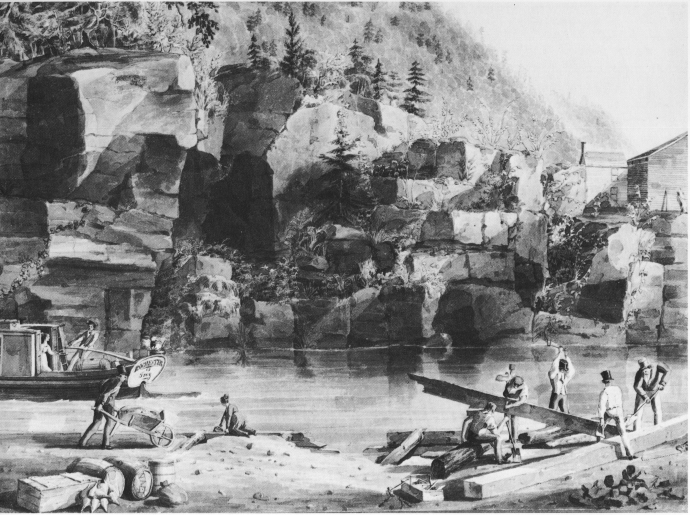
Section of Erie Canal (1831) [San José State University Department of Economics]
In February 1817, the commission outlined a plan for a 363-mile-long canal to run from Albany to Lake Erie. It was to be 40 feet across on top with sides tapering to 28 feet, and four feet deep. Workers began July 4, 1817 on a 77-mile-long middle section, as the landscape was flattest. Unlike the majority of European canals, the Erie Canal ran through an untamed region that was sparsely inhabited.
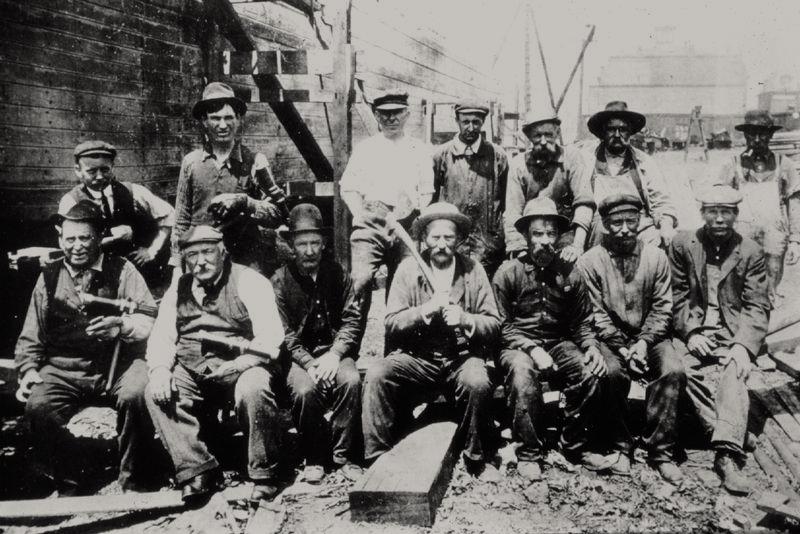
Irish immigrant workers--the minority [The Wild Geese]
Overseeing the operation, elite engineers and surveyors such as Benjamin Wright, David Stanhope Bates, Nathan S. Roberts, and James Geddes, constructed 83 locks and 18 aqueducts. Engineer Canvass White solved the problem of waterproofing the canal’s lining by using locally sourced meager limestone (similar to the volcanic rock trass, a crucial component in hydraulic cement) to create a special cement that hardened with water contact. Because West Point was the only university offering engineering instruction in North America, most of these engineers were self taught. The middle section was completed in 1819 and immediately used. The canal officially opened on October 26, 1825 after the Eastern and Western portions were completed.
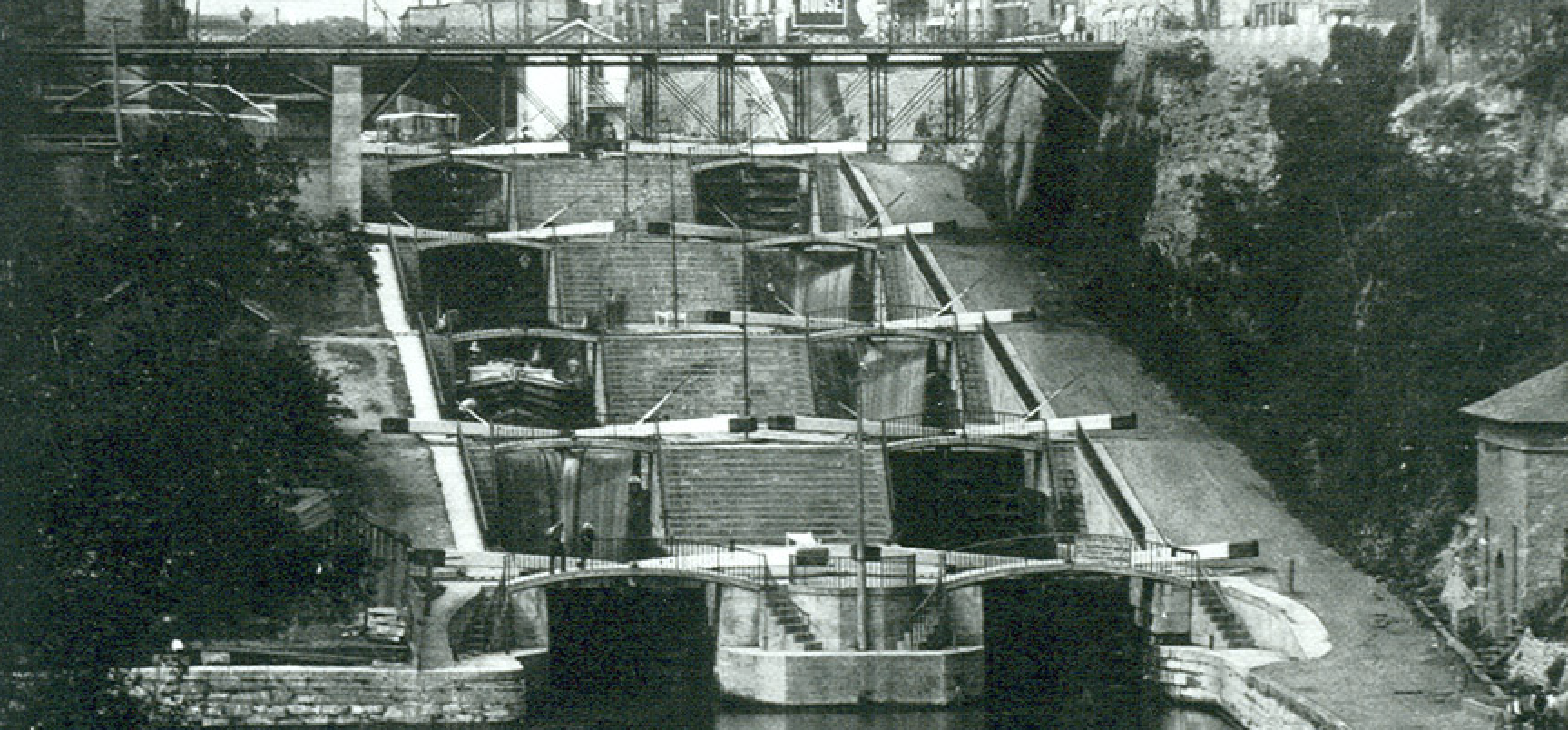
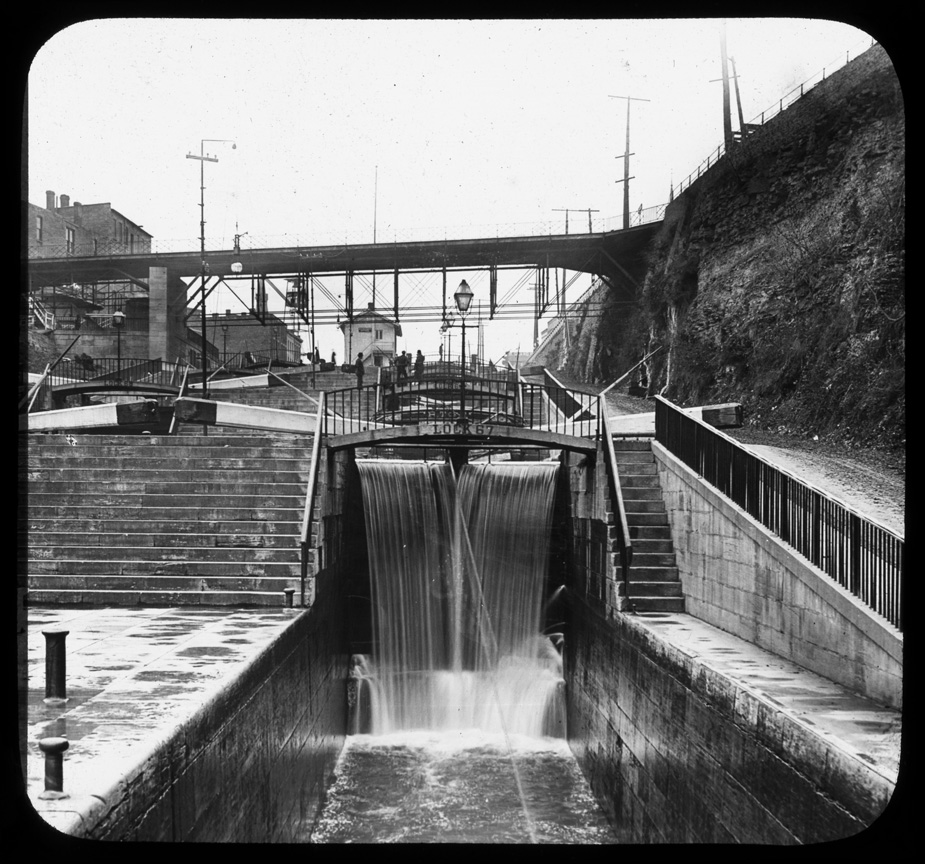
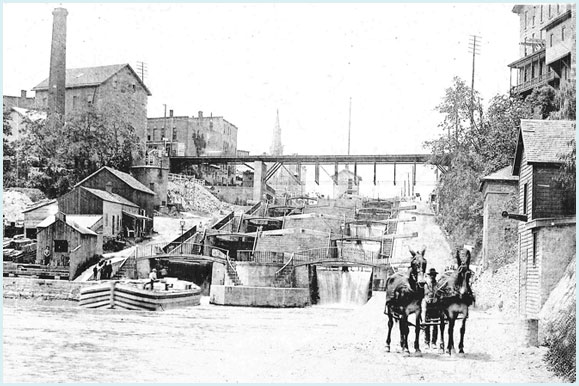
Images of the flight at Lockport [Erie Canalway National Heritage Corridor]
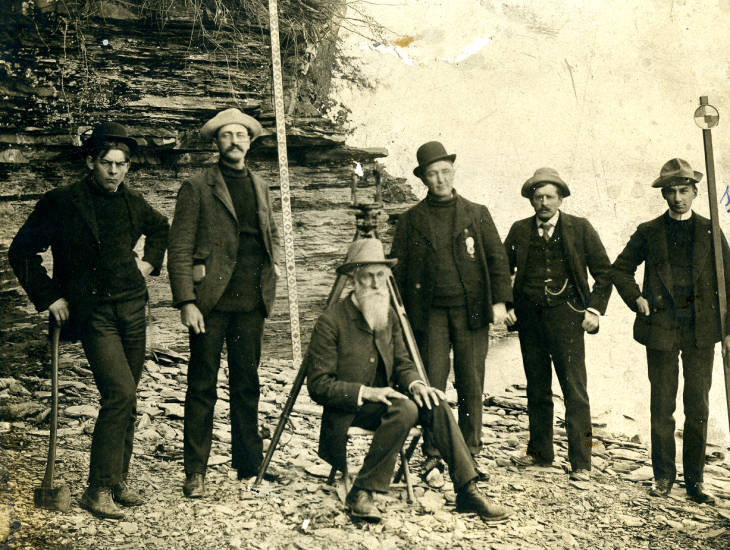
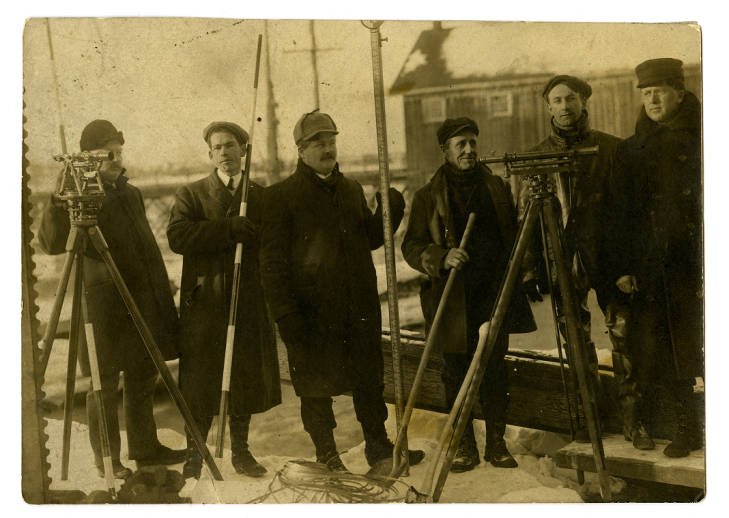
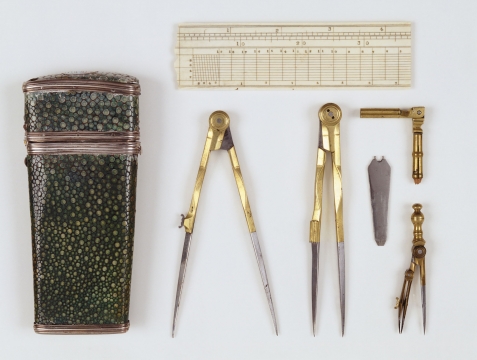
Surveyors and Equipment [Erie Canal Museum and Albany Institute of History and Art]
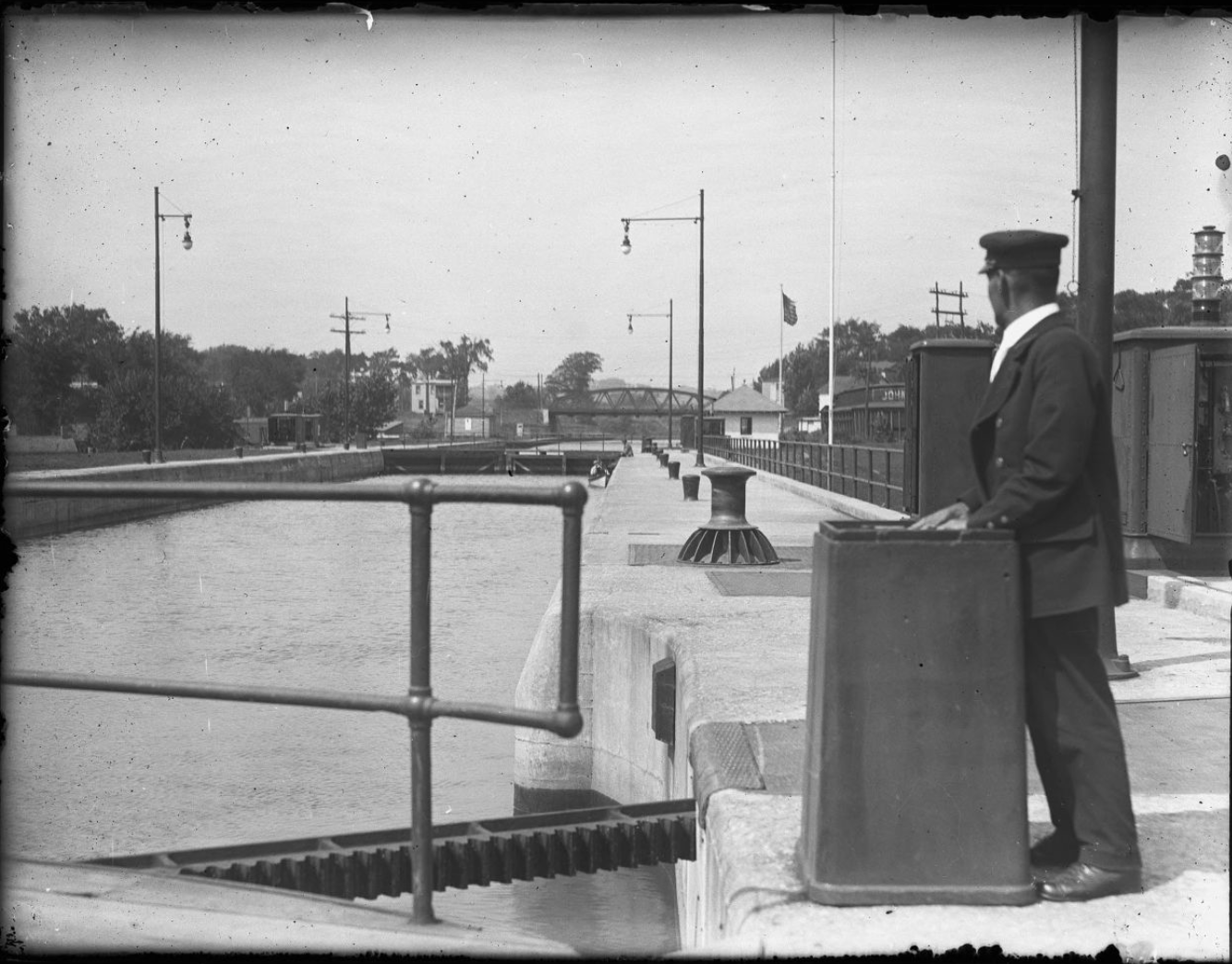
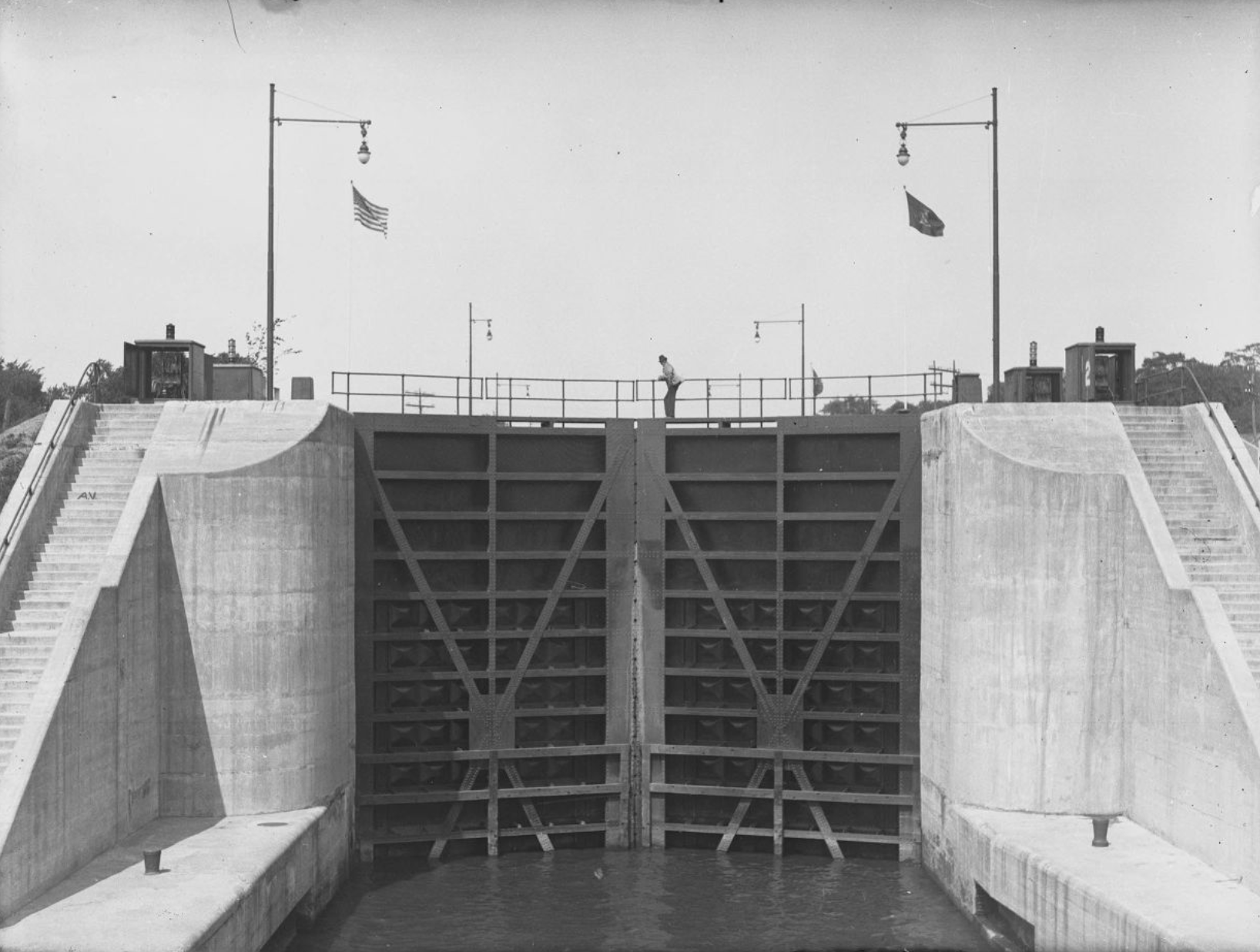
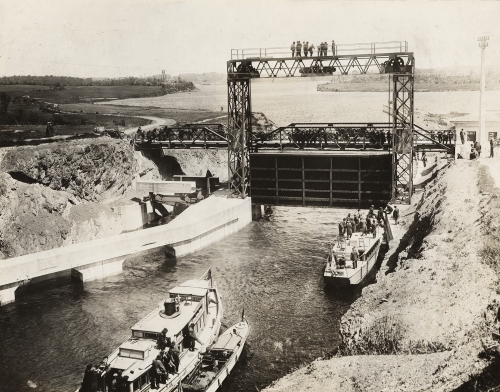
Operator and locks (1916) [NY Historical Society Museum and Library and Albany Institute of History and Art]